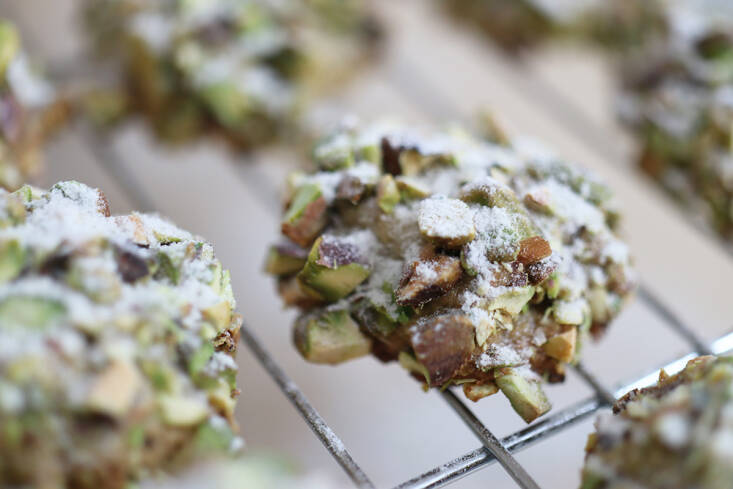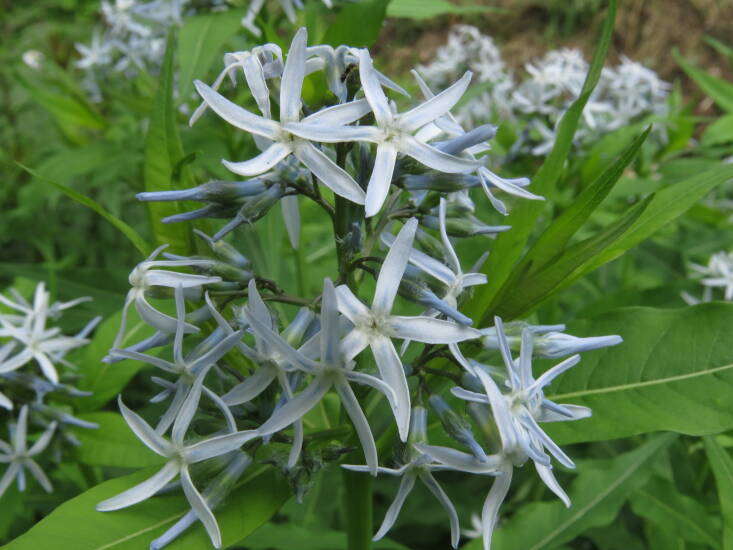The name “mugwort” in the US is a signifier for “invasive,” but when grown purposefully, the aromatic section of the Artemisia genus has much to recommend it. Some species are native in regions of the western United States and are much loved by ecological gardeners, while others are grown for their feathery or felty foliage. Southernwood or wormwood, sagebrush or artemisia (which is what it’s called in the UK), mugwort has many guises. Herbalist and gardener Naneh Israelyan of Pioneer Flora explains why it is one of her favorite plants to grow.
Photography by Valery Rizzo.
Above: Naneh Israelyan harvesting wormwood (Artemisa absinthium) on the rooftop garden she cultivates in Brooklyn.
I first met Naneh when I wrote about Honey’s Bar, where she runs the rooftop garden alongside its owners. I was immediately intrigued by her admiration for the often maligned weed. “Artemisias have a long history of use in herbal medicine. Their applications in reproductive health span from ancient civilizations to indigenous cultures,” says Naneh, whose remedies specialize in women’s health. “I’m fascinated by the long history of Artemisia’s role in alleviating reproductive complications, and its influence on the development of traditional plant medicine.”
 Above: Invasive mugwort (Artemisa vulgaris) staging a takeover in Rockaway, New York.
Above: Invasive mugwort (Artemisa vulgaris) staging a takeover in Rockaway, New York.
Artemisia is named after the classical goddess Artemis, whose wide-ranging résumé includes childbirth and childcare as well as hunting and the wilderness. And the moon. Artemisia is considered a lunar herb; mugwort and wormwood are associated with quality sleep and the optimal dreaming that comes with it. But moon lore also lends itself to hyperbole. “The origin of mugwort as a ‘dream herb’ has always been a bit murky to me,” says Naneh. “It might be a diluted interpretation of the medicinal application for pain during childbirth. North American Indigenous women have a long and well-documented history of using endemic and bioregional Artemisia to treat complications with menstruation and difficult labor.” This is the rub; it wasn’t an invasive herb for Indigenous people; California mugwort (Artemisia douglasiana) is endemic to the western states, as well as white sagebrush, sand sagebrush, and big sagebrush.
 Above: All of the aromatic artemisias have leaves that are a variation on Artemisia vulgaris.
Above: All of the aromatic artemisias have leaves that are a variation on Artemisia vulgaris.
“In terms of the escapist themes behind mugwort, certainly absinthe has something to do with it,” says Naneh. “There are some isomeric similarities between some of the compounds in the genus and THC [the main active ingredient of cannabis], and certainly any nervine calming properties were lifted from indigenous people in the United States.”
 Above: Mad, bad and dangerous to know, the main ingredient of absinthe (Artemisia absinthium).
Above: Mad, bad and dangerous to know, the main ingredient of absinthe (Artemisia absinthium).
“To address the absinthe topic, as interesting as it is as a beverage, it continues in our collective imagination because its reputation as this forbidden fruit has remained. Its origin story—that it was the drink of choice for the intoxicated artist or poet, but also a drink that caused ‘insanity’ in 19th century bohemian and intellectual circles—gives it a taboo and somewhat mysterious narrative, which i feel does it a disservice.”
 Above: Naneh with Japanese mugwort (Artemisia princeps), a Pioneer Floral tincture in the making. It can also be used dried, as tea.
Above: Naneh with Japanese mugwort (Artemisia princeps), a Pioneer Floral tincture in the making. It can also be used dried, as tea.
“There are some species in the Artemisia genus that have a rich nutrient profile. A. anna is surprisingly high in fatty acids, and surpasses the vitamin content of many leafy greens,” says Naneh. “I wanted to ramble on about the use of Artemisia in the ancient diets but—another time.” And with that, she is gone.
Gardenista’s Marie Viljoen has shown quite a bit of love for mugwort as a cooking herb. See:



